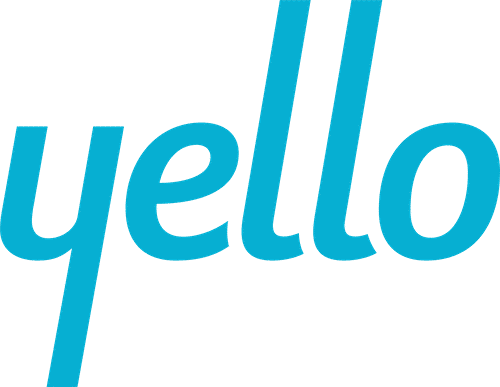To be hugely successful and see meaningful outcomes from DEI, companies must adopt a marathon mindset starting from sourcing, to candidate cultivation, all the way to embodying the core values in everyday employee engagement. And as every marathon runner will attest to, the journey of physical and mental transformation is worth the price of admission. In a thought-provoking webinar, Yello, along with talent experts from AMS, explored this approach to building a sustainable early career DEI program.
The discussion was led by Christen Steele, Customer Success Manager at Yello. Christen was joined by Judy Ellis, Senior Vice President and Head of Diversity, Equity and Inclusion Advisory at AMS, and Terina Matthews-Davis, Client Director, Early Careers & Campus at AMS. All have extensive backgrounds in higher education, and their varied experiences made for a most interesting conversation. Five topics were on the agenda:
- Approaching DEI with a marathon mindset
- The importance of strategy and goals to reach your desired outcome
- Building a sustainable DEI program
- Creating a smooth hiring process for all candidates
- Current events affecting the DEI landscape
Here are some of the insights our webinar attendees learned.
Set specific DEI goals
With a recent Yello survey showing that 44% of employers, recruiters and students consider DEI their biggest challenge for campus recruiting, it’s understandable why organizations would wish for a single solution to cover it all. But the truth is, there is no quick fix for tackling this important challenge.
Judy cautions that you can’t just jump right in. She advises that companies start with the inside versus the outside: looking first at the current state of their culture and noting which areas they can control. Are recruiters and sources well versed in DEI? Do they know how to assess talent objectively? Are they prepared to receive the talent once they arrive so retention isn’t a problem? Have you engaged hiring managers and other stakeholders? Being plugged into social media such as LinkedIn is a great way to amplify your efforts without having to invest a lot.
Terina stresses that DEI isn’t just about the big dollars, but about how engaged companies are on campus with those students. Does the company give back to student groups and organizations? Have they partnered with the national organizations of campus chapters? Do the people in your booth look like the caliber of talent you want to recruit? Are they helping prepare students for future interviews? It’s really a matter of what have you done for me lately.
“You can’t just pick your favorite HBCU and say, I’m going to get all my diversity talent from here and we’re going to be successful. It’s not a one and done. When you talk about the marathon mindset, it means setting specific goals and targets with specific universities, on-campus clubs and organizations.”
Terina Matthews-Davis, Client Director, Early Careers & Campus at AMS
Start with a marathon mindset
The same Yello survey revealed that only 54% of the organizations polled had set DEI sourcing goals. Which means a substantial number of companies may still feel having an Equal Employment Opportunity statement is enough preparation — and of course, it is not.
Judy shared that some companies AMS supports are not allowed to set these kinds of targets as that they are viewed as a quota, or as lowering the bar. And at times, rhetoric from the political landscape enters into the discussion with senior level executives. She will point out that the company certainly sets numerical targets for its advertising and marketing, and relies on measurement rather than just doing what they think is the right thing. It is just as important to have DEI measures to see if you’ve been successful or not.
Terina stressed how vital it is to have DEI goals in writing, because the first thing students will do is go to companies’ websites to see what’s been posted. But next, they’ll go view organization leadership to see how far down the chain it takes to see someone who looks like them — as well as people who have moved in their career trajectories into the roles they are seeking.
“Inclusion is as important to talk about as much as the need for diversity, as we are talking about including all the people that are qualified and available for jobs. A mindset issue I see is that some people believe there are not the same qualified candidates in every different demographic group.”
Judy Ellis, Senior Vice President and Head of Diversity, Equity and Inclusion Advisory at AMS
Build for the long term
Everyone agreed that any successful DEI program has to be sustainable over time. Judy noted that a corollary to that is not relying on only one person in the organization to drive the DEI effort. Part of sustainability is creating an infrastructure that relies on strength in numbers. One of the first steps organizations should take is to establish a steering committee. In addition, talent ambassadors from within the organization should be trained to serve on interview panels; this allows talent to see someone that looks like them as they move through the interview process.
Terina agreed that sustainability is all about engaging the internal employee base. She pointed out that companies who think they may not have any campus recruiters actually do: most employees in their organization graduated from some college or university. As soon as employees find out they can go back to their alma mater to recruit and their expenses will be reimbursed, people will be raising their hands.
Think beyond the offer
Once candidates have given their acceptance, the need for equity and inclusion isn’t over. Terina says this is the time to implement the keep warm strategy — the gifts and trinkets you send them, the links to how the organization is doing, and the invitations to small groups with senior leaders, managers, and their own peers. She would remind her team that candidates are not ours until they show up at our door on the start date; just because they’ve accepted our offer doesn’t mean they’re not going to an event hosted by another company.
It was noted that a keep warm strategy doesn’t necessarily have to be a financial drain. Companies can send their new recruits emails that they’re thinking about them, tools to help them with their studies, and other messages that show they care about them crossing the finish line.
Judy thinks it’s really important to have a good handoff into the onboarding process. Employee resource groups make great touch points for keeping new talent engaged and connected to the culture at large. She recalled the story of a relatively new hire who moved across the country and told her “I don’t know where to get my hair done because no one on my team or my manager looks like me.” This is the kind of role ERG members can play.
“When I was in New York I learned very quickly that it was all about the gym bag that had the company name and logo on the straps, so that when you’re on the subway everyone can see who you work for. Or the man’s socks so people could see the company name when they sat down and their pants grazed up.”
Terina Matthews-Davis, Client Director, Early Careers & Campus at AMS
Do your homework on current events
The closing portion of the DEI discussion considered what’s on the minds of most candidates, especially Gen Z right now — corporate layoffs in the DEI sector, coupled with legislative hurdles in Florida and Texas.
Terina cautions this is a time when silence is not an option for companies. Students are looking to see where companies stand on diversity and they’ll be searching for public statements, especially if a company is headquartered in a place where their support may be taken away. Judy echoed Terina’s comments and said this is a time for organizations to be bold, to take a stand that aligns with their goals and values. If a company says one thing, and then candidates see them doing something else, it could become a whole social media moment that the company won’t want.


